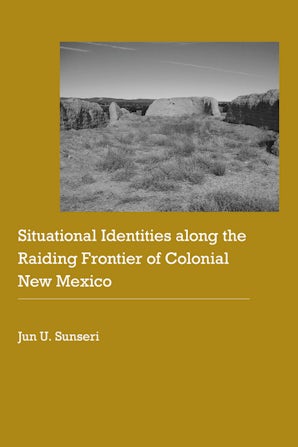"[Sunseri's] work is personal, innovative, and effective in its use of disparate sources, from scientific analysis to oral history, and provides the reader with a well reasoned and supported argument for cultural fluidity and continuation on the New Mexico colonial borderlands."—Peg Kearney, Journal of Arizona History
"Situational Identities along the Raiding Frontier of Colonial New Mexico offers a strong foundation on which to build future place-based historical archaeologies in the Southwest, deeply informed by those who have thought with the land for generations."—Valerie Bondura, Society for Historical Archaeology
"The ethnic pluralism that emerges from Sunseri's text and artifacts will resonate beyond scholarly circles, offering critical insight into contemporary issues around what it means to be 'New Mexican.'"—Dana Velasco Murillo, Western Historical Quarterly
"Situational Identities has much to offer those interested in the regional history of New Mexico, the broader history of Spanish frontier spaces, and the important work of blending methodologies across the humanities and social science disciplines."—Sean F. McEnroe, Hispanic American Historical Review
“This case makes a significant contribution to the interdisciplinary study of the Spanish borderlands, especially in New Mexico, and will set the bar for archaeological and anthropological research into genízaro communities like Casitas.”—Bonnie J. Clark, associate professor of anthropology at the University of Denver and author of On the Edge of Purgatory: An Archaeology of Place in Hispanic Colorado
“This book is a culmination of several years of innovative research at Casitas that is important because it involves local descendent communities for whom this site has great personal and historic meaning. The research is comprehensive and integrates multiple lines of evidence in an unusual way, including documentary, landscape/viewshed, architectural, zooarchaeological, and ceramic analyses.”—Barnet Pavao-Zuckerman, associate professor of anthropology at the University of Maryland and coauthor of Mission and Pueblo of Santa Catalina de Guale, St. Catherines Island, Georgia: A Comparative Zooarchaeological Analysis
